Flower types & their meanings

In this blog, we take a deep dive into the art of floriography - the meanings and symbolism of flowers.
First, let's get stuck into the history of flower meanings and learn how flower symbolism has evolved over time...
- History of flower meanings
- Victorian flower language
- Myths & legends
- Which flowers symbolise luck?
- Which flowers symbolise love?
- Which flowers symbolise happiness?
- Which flowers symbolise loyalty?
- Which flowers symbolise strength
- Which flowers symbolise friendship?
- Which flowers symbolise thank you?
- Which flowers symbolise apologies?
- Which flowers symbolise sympathy

The history of flower meanings

For centuries, flowers have held rich meaning and symbolism deriving from myths and legends to the Victorian flower language and religious teachings.
In this article, we’ll be covering the history of flower meanings from hyacinths to peonies, with a handy list of flower meanings to help you construct your own floral arrangements.
Table of contents
Myths & legends

For centuries, the meaning and symbolism behind flowers have been derived from a cocktail of myths, legends and history across various cultures.
The Roman and Greek Gods were particularly fond of turning people into flowers. For example, Narcissus (daffodils), Clytie (sunflowers), and Paeon (peonies) were all transformed into beautiful flowers that we know and love today.
Along with this, many religions associate flowers with certain teachings and aspects of life.
Eastern symbolism
In Hinduism, the lotus flower is representative of the sun and fertility.
Many Hindu Gods are shown either holding or standing upon a lotus flower and it's thought that the highest human aspiration is to be like the lotus flower - born into murky waters and attaining spiritual enlightenment, untouched by the mud.
In Buddhism, the lotus flower symbolises spiritual awakening, purity and faithfulness.
Emerging from muddy waters in the morning, and blooming by day into a beautiful flower, untouched by the mud, it symbolises purity of the mind, speech and body.
Western symbolism
In Western culture, the lotus flower is sometimes associated with the Virgin Mary, symbolising fertility and piousness.
Also known as the water lily, this sacred flower is thought to represent the struggles of life and not allowing yourself to give up. Rising through the mud each day, it symbolises renewal, enlightenment and new beginnings.
Victorian flower language

Flowers have been used as a means of communication for centuries and were first introduced to Europe by Lady Mary Wortley Montagu, an English aristocrat and writer.
After visiting the Ottoman capital in 1717, she wrote many letters describing her time there, including the game known as sélam - a popular pastime in which women sent messages by exchanging flowers and other objects.
She wrote:
"There is no colour, no flower, no weed, no fruit, herb, pebble, or feather, that has not a verse belonging to it; and you may quarrel, reproach, or send letters of passion, friendship, or civility, or even of news, without ever inking your fingers."
It wasn't until the 1760's that her letters were published and the idea of a secret language took Europe by storm, contributing to the popularity of houseplants and flowers in Victorian times.
The idea of a hidden flower language was highly appealing for Victorians at court, where being outspoken about your feelings was a huge social faux pas!
To take part in this secret language, floral arrangements were specifically designed to send coded messages to the recipient, who would need a floral dictionary to decode it.
The language wasn't easy to understand, with most flowers sharing multiple meanings depending on how the flowers were positioned within the arrangement or how you would wear a flower.
For example, if flowers were presented with the right hand, the answer to the question was yes, left meant no. And the side on which the bow sat could give your message a totally different meaning!
Soon, the Victorian flower language was used by the likes of Shakespeare, Jane Austen and Emily Bronte, and became the norm across Victorian society.
Which flowers symbolise luck?
White heather
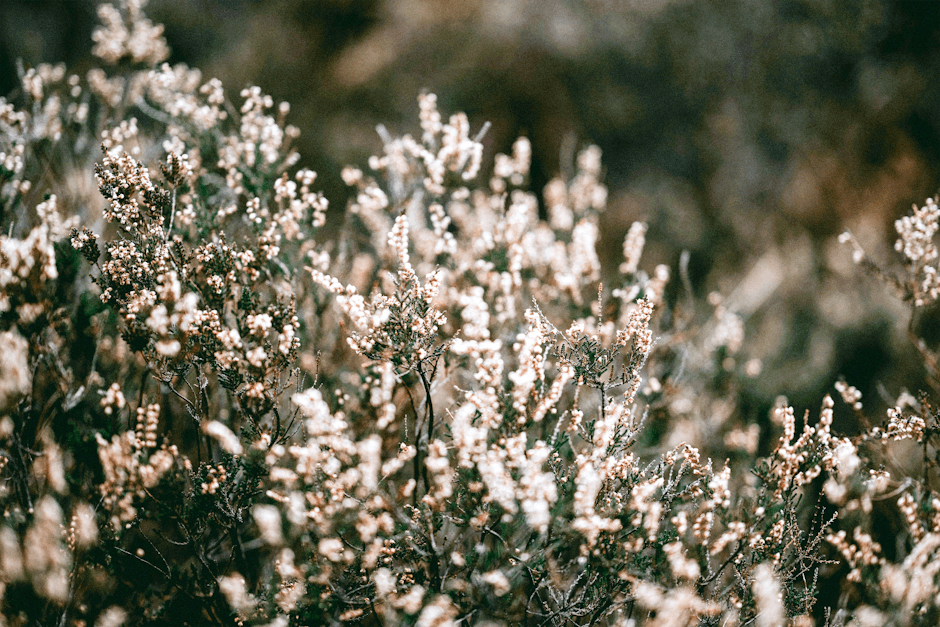
An old Celtic story goes that after discovering that her lover had died in battle, her tears turned the heather white. While the heather was a symbol of her sorrow, she declared that white heather should bring good fortune to others.
Peonies

The Greek myth says that Paeon was a student of Asclepius, God of medicine and healing. Becoming jealous of his student, Asclepius threatened to kill Paeon before Zeus saved him by transforming him into the peony flower.
Today, peonies represent good fortune, bashfulness, wealth, love and passion, depending on the colour.
Narcissus

Known to symbolise wealth and prosperity, the Narcissus genus includes daffodils and jonquils whose stunning yellow blooms mark the arrival of spring and in turn, represent rebirth and renewal!
Lotus

The lotus flower is used in various religious texts and is the national flower of India, where its lush blooms are said to represent the womb of the Earth.
These stunning flowers only grow in murky swamps which makes them a symbol of luck by showing that something extraordinary can emerge from adversity.
Which flowers symbolise love?
Roses

AloThe rose is considered the ultimate symbol of love in the flower world and the legend of its meaning begins when Chloris, the goddess of flowers finds the body of a nymph in the forest.
Saddened by its death, she turns it into a flower so beautiful that all the gods would consider it the Queen of flowers. Aphrodite, the goddess of love was so struck by its beauty that she names it 'rose' - an anagram of her son's name, Eros.
Along with the story of Aphrodite and Eros, roses have been used to symbolise love, passion and romance for centuries.
In the middle ages for example, red roses were often used to depict love in literature and art. While in Ancient Rome, roses were given as gifts of honour and respect and it was there that Valentine's Day originated to celebrate Cupid, the god of fertility.
Red Tulips

Red tulips were once a symbol of the Ottoman Empire due to a Turkish legend. The story goes that when a Prince's lover was killed, he rode himself over a cliff and red tulips sprang from each drop of blood to symbolise their perfect love.
Today red tulips are a symbol of love and affection and are often used in weddings.
Dahlias

Dahlias were often used as Victorian wedding flowers, as it was during this era that people began to see them as symbols of love, devotion and beauty.
Dahlias are also the birth flower of November! Visit our article on birth flowers and their meanings for more info.
Sunflowers

Along with positivity and joy, the happy sunflower also represents deep love and admiration.
In ancient Greek mythology, Clytie, a beautiful water nymph, fell deeply in love with the sun god Apollo. She gazed longingly at him as he rode across the sky, but Apollo didn't return her love and so she retreated into solitude.
Saddened by Clytie's death, Apollo pleaded with Zeus to bring her back to life. In response, Zeus transformed Clytie into a sunflower so she could watch Apollo ride across the sky every day.
It's said that since then, sunflowers follow the sun from morning 'til night and bow their heads sadly when the sun sets, making them a symbol of love and loyalty.
Myrtle

Myrtle has been used to represent love throughout history, including Ancient Greece where Aphrodite was often depicted wearing a wreath or crown of myrtle.
For centuries, myrtle has been used in wedding bouquets and has been a Royal tradition, used by Queen Victoria, Queen Elizabeth II, Princess Diana & The Princess of Wales.

Wedding plants & flowers
Check out keepsake wedding flowers and artificial plants perfect for your big day!
Explore wedding flowersYellow roses & tulips

Both yellow roses and tulips represent warmth, joy, cheerfulness and new beginnings which make them excellent gifts or just to cheer up your home.
In general, most yellow flowers tend to have a positive meaning. Other yellow flowers that symbolise happiness include sunflowers, daisies and chrysanthemums. Here are our top picks for yellow flowers and style tips.
Lily of the valley

With delicate teardrop blooms, lily of the valley symbolises purity, joy, sincerity and happiness among other positive qualities. They’re also related to motherhood and in turn make an excellent Mother’s Day gift.
Sadly, these beautiful flowers only bloom for a short time and are therefore said to represent appreciation for life's simple joys.
Having a lily of the valley personality means that you're someone who can find joy in the moment.
Larkspurs

A common staple in cottage gardens, larkspur is associated with cheerfulness and happiness which makes it an excellent gift to friends and family, whether it's for their birthday or a present to cheer them up.
Which flowers symbolise loyalty?

These pretty blue flowers symbolise remembrance and loyalty, used as a symbol of remembrance, alongside the poppy, for those who died in the two world wars.
It gets its name and symbolism from a German legend which tells the story of a knight who upon picking the flowers for his lover by the Danube river, fell in and was swept away.
Weighed down by his armour, he managed to toss the bouquet of forget-me-nots to her as he shouted 'forget me not'.
Gladiolus

Stemming from the Latin word 'gladius', meaning 'little sword', it's said that these flowers were worn by Roman gladiators for protection in battle.
Alongside their Roman history, the gladiolus flower also symbolises loyalty, honour and moral integrity. It's also the birth flower of August!
Which flowers symbolise strength?

Red orchids in particular are used to symbolise strength and power. The reason for this comes from the Aztecs, who in an attempt to enhance their strength, would drink an elixir made from chocolate and orchids.
It's also their resilient nature which makes orchids a symbol of strength and endurance, along with elegance, romance and luxury.
Coneflower
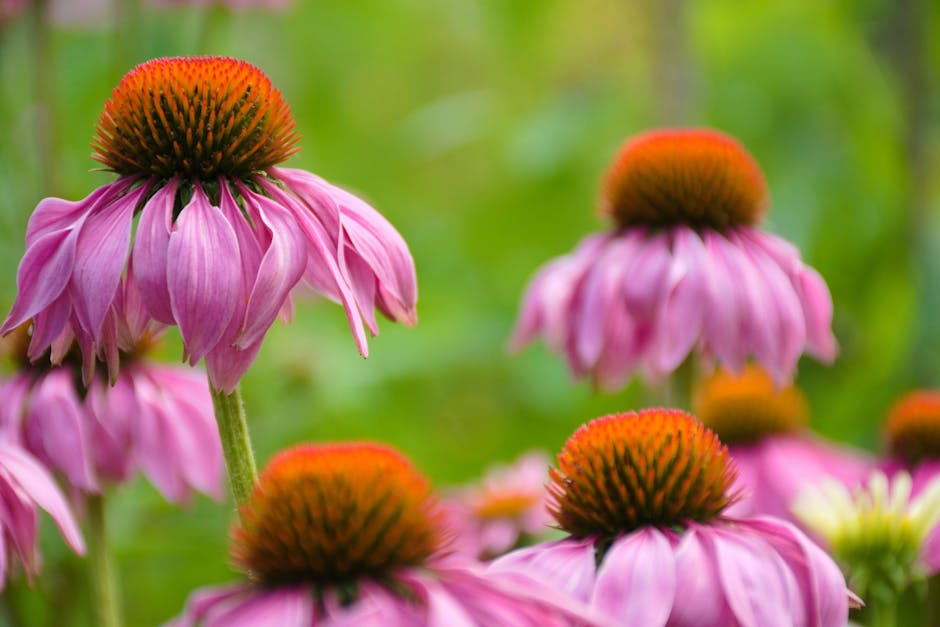
The coneflower or echinacea, symbolises strength and healing, and was often used by Native American tribes to cure various ailments.
Its ability to thrive in tough conditions, including drought, has led to its representation of strength. 💪
Which flowers symbolise friendship?

Also known as the Peruvian lily, this striking bloom is like a cross between a lily and an orchid!
The beautiful alstroemeria is a symbol of loyalty, devotion and friendship.
It's often used to show mutual support and the ability to help each other through life's trials and tribulations, which makes it the perfect gift for a friend in need.
Freesias

Freesias are an excellent birthday gift or symbol of congratulations as they're said to represent friendship, thoughtfulness, trust and high spirits.
In the Victorian flower language, the freesia is the ultimate flower of trust!
Which flowers symbolise thank you?

Yellow lilies in particular symbolise joy, friendship and thankfulness, while their sunny colour is perfect for putting a smile on a friend's face!
Sweet peas

Back in Victorian times, sweet peas were given to friends and family to say thanks for their hospitality. Nowadays, they represent appreciation and gratitude.
Which flowers symbolise apologies?
Blue hyacinths

Blue hyacinths are thought to symbolise sincerity, loyalty and regret, which makes them the perfect flowers to say sorry.
In Greek mythology, Hyacinthus was a spartan prince whose good looks attracted several Greek gods including Apollo, the god of the sun and Zephyrus, the god of wind..
Hyacinthus chose Apollo over the other gods which made Zephyrus rather jealous. During a game of discus, Hyacinthus chased after the discus to impress Apollo, while Zephyrus chose this moment to blow the discus at Hyacinthus's head, killing him.
A devasted Apollo refused to let Hades take his soul to the underworld, instead transforming him into the hyacinth flower.
Pink carnations
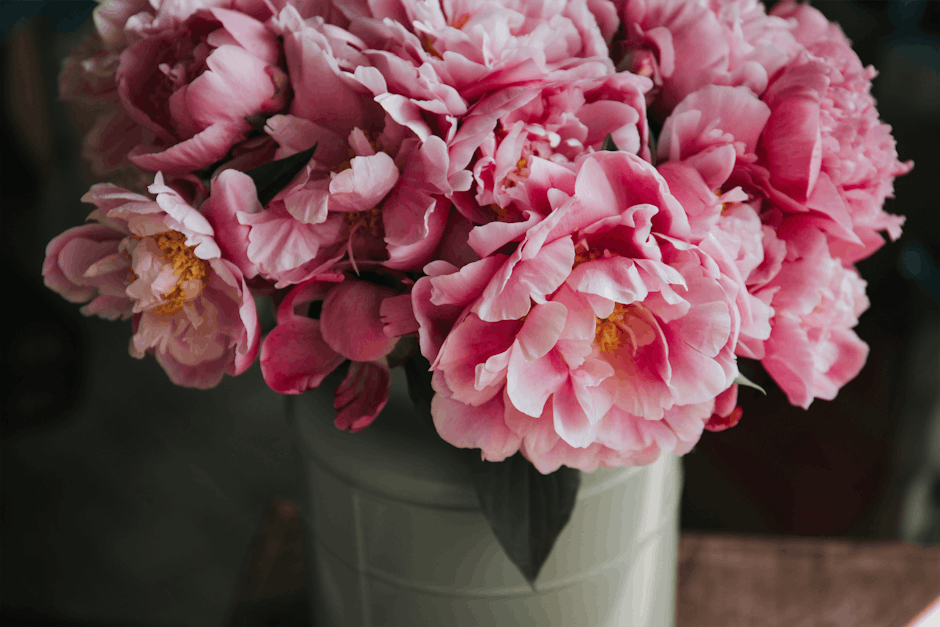
Pink carnations are often used to signify friendship and love, but they're also often used as a way of saying sorry, plus their dainty petals and beautiful colours are sure to make anyone feel special.
Another popular use for pink carnations is as wedding flowers, and they're the official first wedding anniversary flower! (Jot that down, newly-weds!)
White roses

White roses have long been associated with purity and innocence, while the colour white also symbolises sympathy and unity, making white roses an ideal apology flower.
Which flowers symbolise sympathy?
Lilies
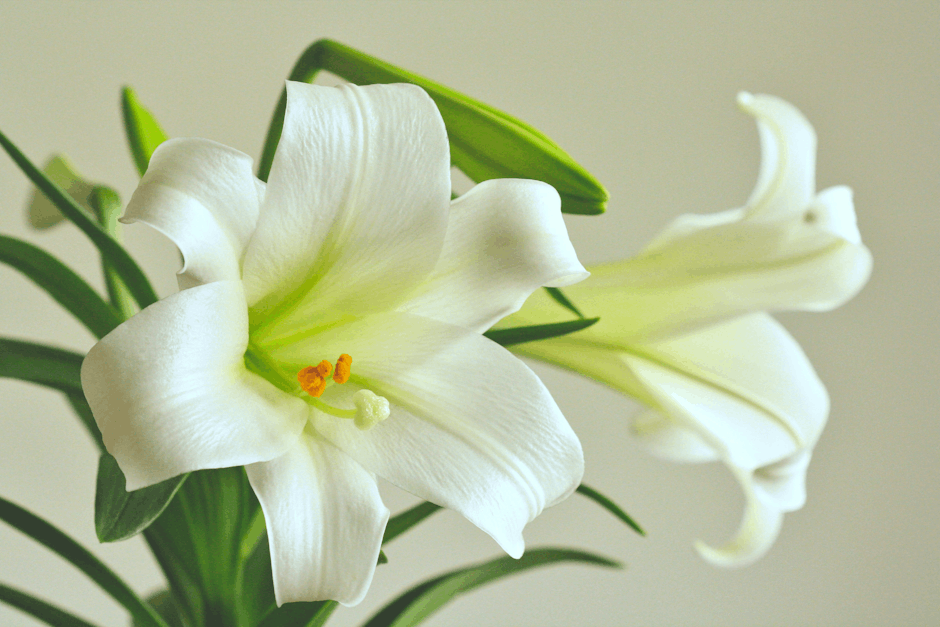
Lilies, particularly white ones, are thought to symbolise the rebirth of the soul, along with innocence and purity.
Because of this, it's become the traditional flower used for sympathy.
Carnations

While white carnations also represent purity and innocence, pink ones are used to send thoughts of remembrance, which makes them an ideal choice for sending a sympathy bouquet.
Try pairing them with lilies, and some rosemary (which also symbolises remembrance) for an elegant gift, rich in symbolism.
Chrysanthemums

Their dramatic flower heads make chrysanthemums a beautiful choice for funeral flowers, and their thought to symbolise sorrow and mourning.
Along with their suitable meaning, they come in many hues so you can match them to your loved ones favourite colours, or send them as a gift to show your sympathy.
Irises

In the ancient Greek myth, Iris was the goddess of rainbows and messenger of the Gods, bridging the gap between Heaven and Earth.
It's because of this that irises symbolise hope and faith, which makes them ideal as a 'get well soon' or sympathy bunch.
How do different combinations affect flower meanings?
Looking back to the Victorian Flower Language, or floriography as it's also known 🤓, they used a combination of different flowers, colours and ways of wearing flowers to affect their meaning, kind of like the emojis of the 19th century.
Today, you can tailor the meaning of your flower arrangements by combining different colours, flower types and the number of flowers to suit the message that you'd like to convey.
You could send an arrangement of irises (faith, hope), heather (good luck) and dephiniums (joy, new beginnings) to wish someone good luck.
While a bouquet of sweet peas (gratitude), camelias (admiration, gratitude) and alstromeria (friendship) would be a good way to say thank you to a friend.
Flowers like roses, tulips and lilies all have a general meaning, but their colours all mean different things which can vastly change their symbolism.
Black roses for example represent hatred, while white roses can signify loyalty - something you don't want to get mixed up!
You can also change the meaning by selecting a specific number of flowers in your arrangement.
A single flower gives a more direct message, whereas a bouquet can deliver a more complex message with various meanings.
Below is a table to help create your own coded messages, just like the Victorians! 🎩
Flower meanings
| Flower | Symbolism |
|---|---|
| Alstroemeria | Loyalty, devotion, friendship & mutual support |
| Aster | Love, faith & wisdom |
| Allium | Good luck, patience & prosperity |
| Anemone | Anticipation & protection, forsaken |
| Anthurium | Hospitality, strength & perseverance |
| Basil | Protection, love & best wishes |
| Bay | Victory, wisdom, courage |
| Black eyed susan | Justice, motivation, encouragement |
| Blossom | New beginnings, life, renewal |
| Bluebell | Humbleness, humility, constancy |
| Buttercup | Childishness, ingratitude |
| Cabbage rose | Deep love & passion |
| Calla lily | Delicacy, beauty |
| Camelia | Gratitude, admiration |
| Carnation | Love, fascination, distinction |
| Chamomile | Energy in adversity, joy, positivity, happiness, peace |
| Chrysanthemum | Unwavering optimism, |
| Clematis | Mental beauty & ingenuity |
| Cone flower | Grace, strength, resilience, healing & protection |
| Cornflower | Hope, devoted love, good fortune |
| Cosmo | Harmony, order, peace |
| Cow parsley | Grace & adaptability |
| Cyclamen | Empathy, devotion |
| Daffodil | Unrequited love, chivalty |
| Dahlia | Dignity & elegance |
| Daisy | IInnocence, purity, joy cheerfulness & new beginnings |
| Delphinium | Big hearted, joy & new beginnings |
| Eucalyptus | Strength, protection & abundance |
| Fern | Fascination, sincerity, strength |
| Forget me not | True love, do not forget |
| Freesia | Innocence, friendship |
| Gardenia | Elegance, purity, beauty & gentleness |
| Geranium | Bliss, love, good health, peace & friendship |
| Gladiolus | Victory, strength, honour & pride |
| Gypsophilia | Innocence, eternal love & purity |
| Heather | Good luck, protection & admiration |
| Hyacinth | Jealousy, rebirth, forgiveness & joy |
| Blue hyacinth | Sincerity, loyalty & fidelity |
| Pink hyacinth | Playful joy |
| Purple hyacinth | Sorrow, forgiveness & regret |
| Red hyacinth | Play, fleeting passion |
| White hyacinth | Purity, thoughtfulness |
| Yellow hyacinth | Jealousy |
| Hydrangea | Gratitude, hope, arrogance, boastfulness |
| Iris | Message, faith & hope |
| Ivy | Fidelity, everlasting life & devotion |
| Jasmine | Love, beauty & modesty |
| Larkspur | Lightness, joy, positivity & strong bonds of love |
| Lavender | Healing, purity, devotion, calmness, grace & protection |
| Orange lily | Energy, confidence & warmth |
| Pink lily | Femininity, admiration, youth & joy |
| Purple lily | Wealth, royalty & elegance |
| Red lily | Love, affection & passion |
| White lily | Purity, innocence, love, rebirth & tranquillity |
| Yellow lily | Thankfulness & friendship |
| Lily of the valley | Return of happiness, purity, motherhood & good luck |
| Lisianthus | Charisma, admiration & congeniality |
| Lotus | Strength, rebirth, beauty, purity, renewal & good luck |
| Magnolia | Grace, beauty, femininity & nobility |
| Marigold | Grief & jealousy |
| Myrtle | Loyalty, love & beauty |
| Narcissus | Egotism, self-love, creativity & re-birth |
| Orchid | Love, beauty, strength & thoughtfullness |
| Pansy | Thoughtfulness, love & remembrance |
| Peony | Bashfulness, good luck, honour & wealth |
| Petunia | Resentment, hope & perseverance |
| Poppy | Remembrance, sleep, peace & re-birth |
| Orange rose | Joy, enthusiasm & energy |
| Pink rose | Gratitude, sweetness, innocence & desire |
| Purple rose | Royalty, luxury & wealth |
| Red rose | Romance, passion, admiration & love |
| White rose | Purity, grace & new beginnings |
| Yellow rose | Friendship & positivity |
| Ranunculus | Charm & attractiveness |
| Rosemary | Fidelity, remembrance & love |
| Sage | Wisdom, immortality, healing & protection |
| Sunflower | Loyalty, adoration, devotion, joy & positivity |
| Sweet pea | Loyalty, friendship, appreciation & gratitude |
| Sweet william | Admiration, gratitude & gallantry |
| Thistle | Devotion, bravery, strength & determination |
| Thyme | Strength & courage |
| Orange tulip | Energy & enthusiasm |
| Pink tulip | Affection, good wishes & happiness |
| Purple tulip | Royalty, elegance, luxury & wealth |
| Red tulip | Passion, perfect love & romance |
| White tulip | Forgiveness, purity, grace, honour & respect |
| Yellow tulip | Cheerfulness, hope, friendship & joy |
| Violet | Modesty, faithfulness & watchfulness |
| Wallflower | Fidelity |
| Willow | Sadness, everlasting life, healing & grief |
| Yarrow | Everlasting love, war & healing |
| Zinnia | Thoughts of absent friends |
What's the most meaningful flower?

The rose is one of the oldest flowers, rich in meaning and mythology, and adored across the globe by the ancient Romans, Egyptians, Greeks and Chinese.
Today the rose is the ultimate symbol of love, thought to have been created by the Greek goddess of love, Aphrodite. Each colour has a different meaning, but red roses are by far the most meaningful flowers.
What is the most spiritual flower?

The most spiritual flower varies from East to West. Generally speaking however, the lotus flower is considered the most spiritual and sacred flower, known as the 'womb of the world' in Egyptian culture.
Do any flowers have negative meanings?

Along with good, there are many flowers that have negative meanings. The list includes the following:
Black dahlia - betrayal and sadness and mourning. Associated with the murder of Elizabeth Short in 1947 who became known as 'The Black Dahlia'.
Hydrangea - Alongside gratitude and hope, the hydrangea also symbolises arrogance, vanity and boastfulness, which can make it a confusing gift best to avoid for your friends and family! Its symbolism is due to its abundance of flowers, yet very few seeds.
Yellow rose - While today, yellow roses are a symbol of friendship and joy, they once signified jealousy, betrayal, infidelity and greed in Victorian times.
Petunia - As pretty as they are, petunias symbolise resentment and anger. On the positive side, it also represents comfort, familiarity and hope.
Black rose - perhaps the most negative, the black rose signifies pure hatred, death, despair and farewells. In some cultures however, black roses represent strength and a love that triumphs over death.
Begonia - Although in today's world, the begonia symbolises peace and harmony, they were once used as a warning and signal to be cautious of danger ahead.
Need advice on flower types & their meanings?
Using our list of flower meanings, you can create your own flower arrangements to send silent messages and style them just as the Victorians would, whether that's tilted to one side or given in the left or right hand to indicate a yes or no. Just make sure not to mix up the meanings so as not to cause offence! 🤭
You can find more info on flower meanings and interior design tips at our blog. Alternatively, get in touch with our team for more help.
Related articles
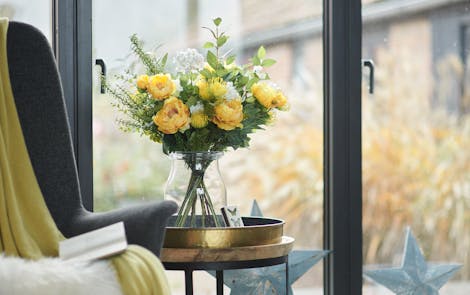
The meaning and psychology of flower colours
In this blog we combine both colour psychology and traditional gifting ideas to help you select stunning blooms fitting for a particular occasion.
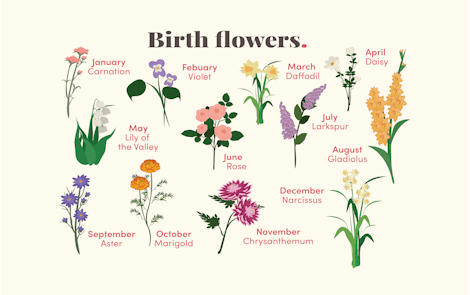
Birth flowers & artificial alternatives
Ever wondered what your birth month flower says about you? Delve into the flowers, symbolism and personality traits associated with each month of the year.
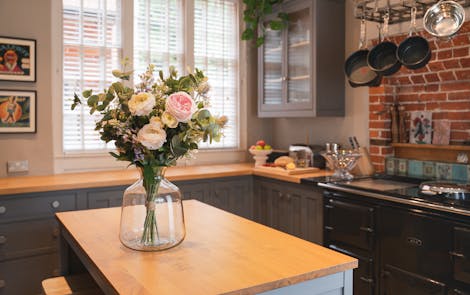
Blooming Artificial top picks: best flowers for birthdays
In this article, we explore popular flowers for birthdays, flower meanings and much more!

Making your artificial flowers smell great
Here are our tips & tricks to making your artificial flowers not only look good, but smell good too!

The mental health benefits of artificial plants
In this article we’ll discuss how incorporating these faux greens into your surroundings can provide a breath of fresh air for our mental well-being.































































